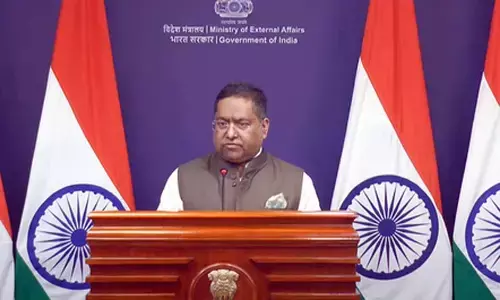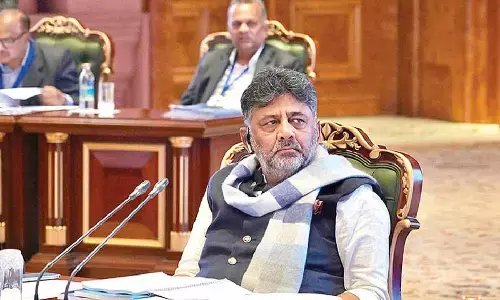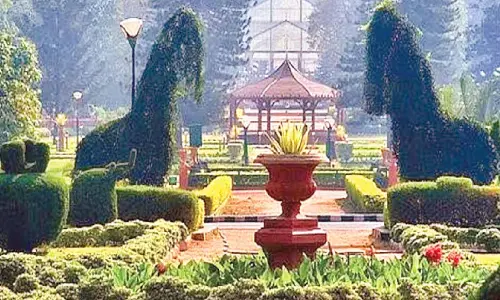Source-wise Irrigation in Bangaru Telangana

The source-wise net area irrigated from 2008-09 to 2014-15 is shown in Table below. Net area irrigated by wells was the highest in 2015-16 (Kharif) at 86.37 percent and fell to 74.83 percent in 2013-14 and increased to 81.87% in 2014-15, while the area irrigated by canals has increased from 5.07 percent in 2012-13 to 12.68 percent in 2013-14 and decrease to 10.08% in 2014-15.
Source-wise Irrigation:
The source-wise net area irrigated from 2008-09 to 2014-15 is shown in Table below. Net area irrigated by wells was the highest in 2015-16 (Kharif) at 86.37 percent and fell to 74.83 percent in 2013-14 and increased to 81.87% in 2014-15, while the area irrigated by canals has increased from 5.07 percent in 2012-13 to 12.68 percent in 2013-14 and decrease to 10.08% in 2014-15. During the given period, on an average, 76 percent of net irrigated area was through wells, showing the heavy dependence on good irrigation.
Table: Percentage of Net Area Irrigated by source of Irrigation from 2008-09 to 2014-15 & 2015-16 Kharif
| Year | Net Irrigated Area (Lakh Ha.) | Source-wise Net Irrigated Area (%) | ||
| Canals | Tanks | Wells | ||
| 2008-09 | 18.28 | 11.55 | 13.03 | 72.09 |
| 2009-10 | 14.93 | 9.18 | 3.82 | 84.33 |
| 2010-11 | 20.04 | 15.76 | 11.87 | 69.63 |
| 2011-12 | 19.85 | 16.37 | 9.22 | 71.69 |
| 2012-13 | 17.74 | 5.07 | 8.91 | 83.77 |
| 2013-14 | 22.89 | 12.67 | 10.05 | 74.83 |
| 2014-15 | 17.26 | 10.08 | 5.62 | 81.87 |
| 2015-16 K | 13.13 | 3.43 | 8.38 | 86.37 |
Source: Directorate of Economics and Statistics, Hyderabad.
Irrigation Intensity: Irrigation intensity (ratio of gross irrigated area to net irrigated area) under all sources of irrigation and wells is given in Table below. Irrigation intensity under wells is 1.50 in 2014-15. Expansion in Gross and Net area irrigated has taken place due to well irrigation.
Table 12: Gross and Net Irrigated Area and Irrigation Intensity from 2007-08 to 2014-15 & 2015-16 Kharif
|
| GIA under | NIA under | Irrigation | GIA under | NIA under | Irrigation |
| Year | all sources | all sources | intensity | wells | wells | intensity |
|
| (lakh ha.) | (lakh ha.) | (all sources) | (lakh ha.) | (lakh ha.) | (wells) |
|
|
|
|
|
|
|
|
| 2007-08 | 24.46 | 17.49 | 1.40 | 18.23 | 13.14 | 1.39 |
| 2008-09 | 27.21 | 18.82 | 1.45 | 19.814 | 13.17 | 1.50 |
| 2009-10 | 21.31 | 14.93 | 1.43 | 18.42 | 12.59 | 1.46 |
| 2010-11 | 29.99 | 20.04 | 1.50 | 21.11 | 13.96 | 1.51 |
| 2011-12 | 28.64 | 19.85 | 1.44 | 21.57 | 14.23 | 1.52 |
| 2012-13 | 25.57 | 17.74 | 1.44 | 22.07 | 14.86 | 1.49 |
| 2013-14 | 31.54 | 22.80 | 1.38 | 23.34 | 17.11 | 1.36 |
| 2014-15 | 25.29 | 17.26 | 1.47 | 21.16 | 14.13 | 1.50 |
| 2015-16 K | 13.24 | 13.13 | 1.01 | 11.45 | 11.34 | 1.01 |
Source: Directorate of Economics and Statistics, Hyderabad.
Telangana as the Seed Bowl of India
Seed is the basic and vital input that could increase crop yields substantially, provided good management practices are followed with other inputs. Availability of diverse agro-climatic regions with cool and dry weather conditions around the year made Telangana a congenial place for cultivating crops for the production of quality seed. Since Hyderabad has excellent logistic services facilities and strategically located in the middle of the country connecting East-West and North-South, there is a high potential for the State to become a 'Seed Bowl of the Country'.
The State produces around 37.42 lakh quintals of seeds of various crops every year, consisting paddy, hybrid paddy, maize, cotton and Bengal gram etc. At present, about 90-95% of hybrid rice seed production is being taken up by different seed companies in Warangal and Karimnagar districts. Nizamabad supplies 100 percent seed requirements of hybrid jowar and bajra for the country.
Following are the potentials of the seed industry in Telangana:
• More than 60 percent of the nation's seed requirement is supplied from Telangana.
• All districts of Telangana are suitable for seed production.
• Production of seeds of all major crops.
• Cool and dry weather conditions help in enhancing the shelf life of seeds.
• Availability of efficient and economic seed processing plants and storage facilities.
• More than 400 seed companies are operating in and around Hyderabad
• presence of International, National and State institutes engaged in seed development such as, National Seeds Corporation(NSC), International Crops Research Institute for Semi-Arid Tropics(ICRISAT), Indian Institute of Rice Research(IRR), Indian Institute of Oilseeds Research(IIOR), Indian Institute of Millets Research(IIMR) Telangana State Seeds Development Corporation(TSSDC), Telangana State Seed Certification Agency(TSSCA), and State Agricultural Universities.
Taking cognisance of the potentials, Government of Telangana has taken an initiative to develop modern infrastructural facilities such as assured power supply, provision of irrigation, seed storage godown and capacity building programmes for all stakeholders for the growth of the seed industry in Telangana. The strategies followed by the Government include:
• Delineation of the suitable seed production clusters
• Strengthening of seed village programme
• Promoting seed production of millets, oilseeds, forage crops etc, as a social responsibility of seed industry
• Adoption of non-traditional areas by the seed industry
• Revival of all State Seed Farms
• Support for developing post-harvest facilities like seed processing plants, storage and transportation
• Explore the additional export potential
• Dedicated seed cell to co-ordinate all seed programmes
• Promotion of seed production co-operative societies
• Exploring the possibilities for development of Global Seed Valley/Hub
• Promotion of Public-Private Partnership in seed production.
The Department of Agriculture prepared a seed production plan for five years, which aims at attaining 100 percent Seed Replacement Ratio (SRR) in coordination with the universities and other agencies.The government has initiated all necessary steps to strengthen the seed chain by involving various Research Institutions, Government Departments, and private seed producing agencies.
G.Rajendera Kumar















